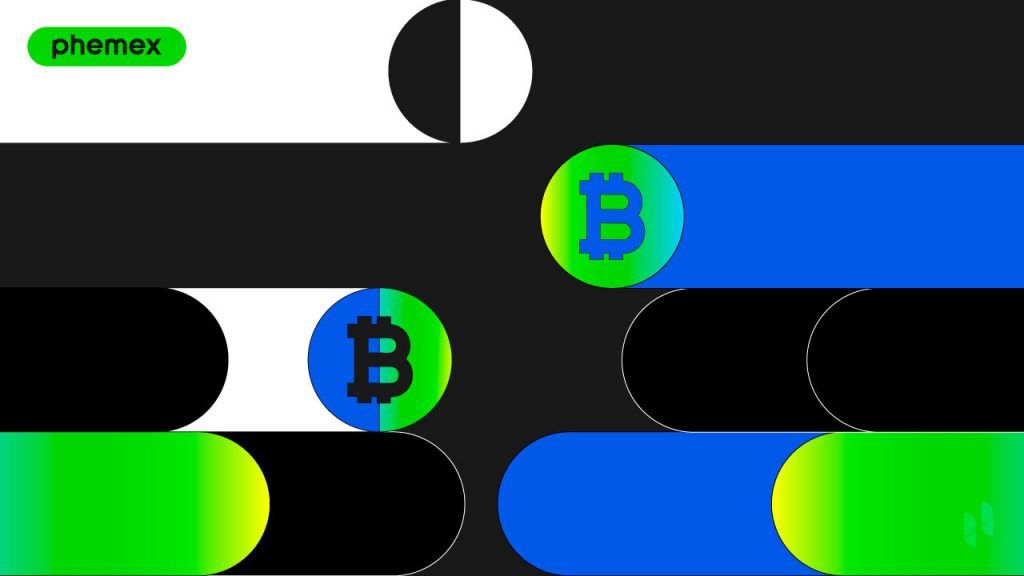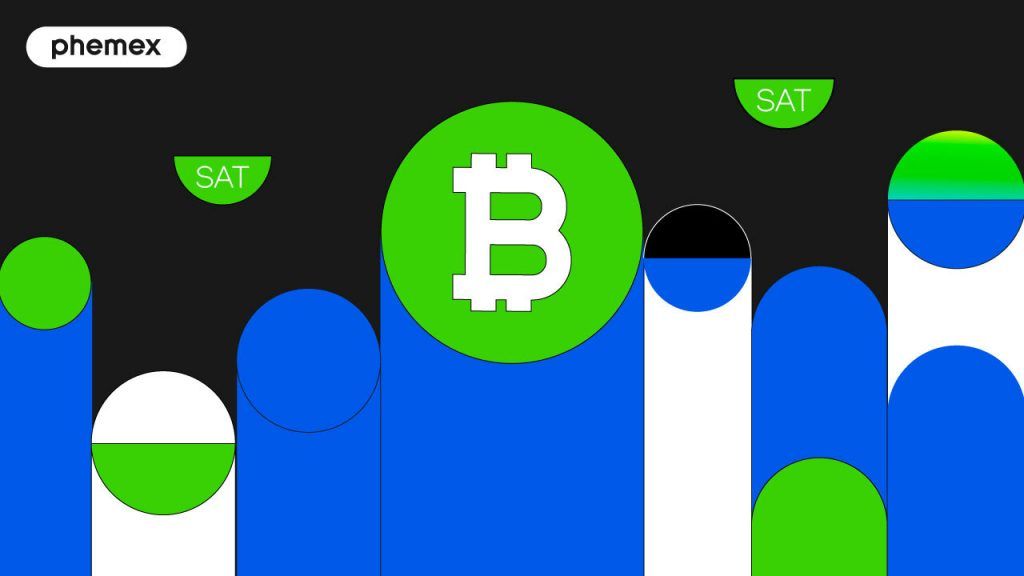Bitcoin is a virtual currency that requires a digital key pair for access. For various reasons, some parties have manufactured coins that allow Bitcoin to be transferred in physical form.

What Are Physical Bitcoins?
Physical Bitcoins make the connection between monetary value and digital representation easier to understand. Those interested in investing or holding Bitcoin can be apprehensive about setting up digital wallets and worried about misplacing or losing their private keys. To mitigate these concerns, many individuals transfer Bitcoin by using a physical representation of this digital currency. This is usually a coin made of a metallic alloy, such as brass, silver, or gold, and featuring a Bitcoin logo (₿) or cryptocurrency theme.
Typically, the coin is pre-funded or pre-loaded with an amount of Bitcoin. This physical coin can then be used in face-to-face transactions, where it is passed from one person to another, transferring the Bitcoin value along with it.
As further illustration of this process, think of a physical Bitcoin as a type of cash card. To access your cash in your bank account, you insert your card into an ATM. By entering your PIN, you gain access to your cash. The plastic or paper making up your cash card has relatively little to no value. Rather, the value associated with your card is premised on a combination of possessing your card and accurately entering your PIN.
Physical Bitcoins operate in a similar manner. Aside from being a potential collector’s item, the physical Bitcoin itself generally has little or no value. However, the physical coin contains some kind of data or information that links the physical coin to a designated Bitcoin amount. In addition, like needing to enter the proper PIN with your cash card, you need to provide the correct private key to redeem the pre-funded Bitcoin contained on the physical coin.
Physical Bitcoins were originally established to serve multiple functions:
- To be used for the purchase of goods or services
- To act as an investment vehicle
- To facilitate the storage and/or management of Bitcoin
- To be collected and/or traded

How Do Physical Bitcoins Work?
Most physical Bitcoins were pre-loaded or pre-funded with a certain amount of Bitcoin. Importantly, the physical Bitcoin visually designates that it is pre-funded with a certain amount of Bitcoin, such as 1, 5, 10, or 100 BTC.

The coin will also include both an identification number and a hidden private key. The identification number identifies information such as the manufacturer of the coin, the lot of the coin, and when the coin was produced.
The private key is usually hidden from view. One can access the hidden private key and can then use the private key to redeem the pre-loaded or pre-funded Bitcoin amount.
The private key is usually hidden underneath some type of a tamper-resistant device, typically a hologram sticker. Once the hologram is removed to allow access to the private key, there is a visual indication that the coin has been tampered with and therefore may no longer be pre-funded with the designated amount.
What Are the Different Types of Physical Bitcoins?
There are many different types of physical bitcoins. According to the Encyclopedia of Physical Bitcoins and Crypto-Currencies, there are about 60 manufacturers and providers of physical cryptocurrencies, many of which manufacture or supply physical Bitcoins. Below we summarize two popular physical Bitcoin providers.
Casascius Coins
The original and most famous physical Bitcoins were developed and sold under the Casascius Coin brand, started in 2012 by Bitcoin enthusiast Mike Caldwell. In total, Caldwell produced 30+ types of physical coins and bars having different denominations from 0.1 BTC to 1,000 BTC.
Each coin included a small label identifying a private key. The first person to redeem this private key would receive the coin’s designated Bitcoin value.
Caldwell provided an eight character code on the front of his coins. This code was used to represent the first eight characters of the Bitcoin address assigned specifically to that coin. This eight character code could be used verify the coin’s balance on Block Explorer.

There was a mathematical relationship between the Bitcoin address on a Casascius coin’s face and the private key hidden inside. Since the pre-loaded or pre-funded digital Bitcoin was actually located on the public Bitcoin blockchain, it would be completely inaccessible to anyone unless this private key from the coin was loaded into a Bitcoin wallet.
The private key of a Casascius coin was provided on a card embedded inside the coin, and protected by a tamper-evident hologram. By peeling away the hologram from the backside of the coin, a honeycomb pattern was created. An intact hologram meant the physical Bitcoin was still valid.

The commercial success of the Casascius physical Bitcoins quickly attracted the attention of the US Treasury Department, particularly the US Financial Crimes Enforcement Network (FinCEN). The FinCEN is the branch of the US Treasury responsible for enforcing the laws related to maintaining and regulating the minting of coins and the actions of money transmitters.
In 2013, FinCEN sent a letter to Caldwell stating that Casascius was operating as a money transmitter and was therefore required to jump through numerous regulatory hoops. FinCEN also stated that Caldwell was required to register at the federal level. Rather than comply with these demands, Caldwell ceased manufacturing his pre-funded coins and bars.
Approximately 20,000 of Caldwell’s original items remain in an “unpeeled” or active state as confirmed on the Bitcoin blockchain. These original items have a total stored value of 44,000 BTC, currently worth about $1.5 billion.
Titan Bitcoin
In 2014, Titan Bitcoin began offering a Titan One Gold coin containing one troy ounce of 24-karat gold that was prefunded with one Bitcoin. Titan also offered other coins having denominations ranging from 0.5 BTC to 1 BTC.

Much like the Casascius physical Bitcoin, each Titan coin contained an eight digit unique identification code along with a private key hidden underneath a security hologram.
Titan also offered a website where coin owners could enter their eight digit unique identification code to query the current value of the coin in real time.

Verification allowed for a quick determination of the value of the coin without removing the security hologram. This feature prevented someone from purchasing a pre-funded coin that had been tampered with or that no longer had any Bitcoin value.
Similar to the Casascius coins, to redeem the embedded value of a Titan Bitcoin, you had to peel off the security hologram to access the code. Peeling off the hologram would make it evident that the coin had been tampered with.
Where Can You Purchase Physical Bitcoins?
Due to US regulatory efforts, you can no longer purchase preloaded physical Bitcoins directly from suppliers. However, some of these coins are still available on secondary markets, such as eBay, other eCommerce websites, and sometimes coin auction sites.
What Are Physical Bitcoins Worth?
A particular physical Bitcoin’s value depends on whether the coin has already been peeled. If you can verify that the coin still contains some Bitcoin that has not yet been redeemed, then the coin is worth at least the value of the preloaded Bitcoin.
In certain circumstances, such an unredeemed coin can be worth more than the face value Bitcoin amount. For example, a 25 BTC Casascius coin recently sold for $1.7 million, even though 25 BTC was worth just $1.2 million at the time the auction closed. So, this unredeemed coin sold for $500,000 more than its face value at the time.
Alternatively, if a particular physical Bitcoin has already been redeemed, it could still be worth something since such physical Bitcoins may still be of interest to Bitcoin collectors based on their scarcity and collectability. For example, an original unloaded Casascius physical Bitcoin is being offered for sale on eBay for $1,950.
Why Purchase Physical Bitcoins?
People have purchased physical Bitcoins as investment vehicles, hoping that the price of Bitcoin continues its bull run. In addition, early on, some Bitcoiners purchased these coins as pieces of art.
Apart from investing and collecting, some investors see advantages to purchasing these coins for estate or inheritance planning. For example, these physical coins can be placed in a safe deposit box and easily separated for heirs later on. This makes it easy to separate valuations, and doesn’t require the use of exchange accounts or wallets for storing.
In addition, physical Bitcoins represent the highest level of monetary transaction privacy, as there is nothing to associate the owner with an address. Such coins can be exchanged among many different owners without producing any traceable record, not even on the blockchain.
However, if you are interested in owning physical Bitcoin, it is perhaps prudent to consider only the more popular physical Bitcoins, such as those that were distributed by Casascius or Titan.
How to Confirm a Physical Bitcoin’s Authenticity?
You can submit physical Bitcoins to third-party certification services, such as the Professional Coin Grading Service (PCGS), for authentication and grading. For example, a 1,000 BTC Casascius coin recently submitted to PCGS was graded as “PCGS Proof-70 DCAM.” This grading means that this particular Casascius coin was in perfect condition, had zero imperfections, and had “all features and fields exactly as the engraver and mint intended.”
Aside from third-party certification, you can also review the status of certain physical Bitcoins on active online websites that track whether certain physical Bitcoins are still active (unpeeled). For example, if you are interested in purchasing a Casascius coin, you could look up its Bitcoin address on the Casascius Tracker, which tracks each coin and provides information including whether the coin has been redeemed.

Are Physical Bitcoins Legal?
No law specifically prohibiting holding physical bitcoin has been identified. Holding physical Bitcoin is legal in the US. However, some countries might have general cryptocurrency restrictions that relate to holding physical Bitcoin. For that reason, it’s safest to check your local regulations before you purchase or own a physical Bitcoin containing Bitcoin value.
In addition, at least in the US, it appears that the distribution of physical Bitcoins may violate federal laws relating to money transmission.
Conclusion
Physical Bitcoins may appeal to crypto enthusiasts for many reasons, from collectability to maximum transaction privacy. But before you purchase any physical Bitcoins, remember the crypto mantra: “don’t trust, verify.” That is, use a certified coin expert to verify the authenticity of any physical Bitcoin that you are considering purchasing. Such a third party may also confirm that the physical Bitcoin is indeed still pre-loaded or pre-funded by the proper amount and that the coin has not been tampered with. Alternatively, online blockchain sources can help you confirm that the physical Bitcoin has not already been redeemed.
If you find all this too cumbersome, however, there is always the option of buying digital Bitcoin easily.
Read More
- What is Bitcoin: World’s Largest “Group Project”
- Why Does Bitcoin Have Value?
- What is Cryptocurrency & How It Differs From Digital Cash
- https://phemex.com/academy/cryptocurrency-glossary/bitcoin-btc
- What is Bitcoin Transaction: Components, Verification and Privacy
- Bitcoin Public Key vs. Private Key: All You Need to Know
- Bitcoin As Legal Tender: How Bitcoin Could Replace Fiat Currency?
- Supply and Demand of Bitcoin: How Many Bitcoins Are There?









